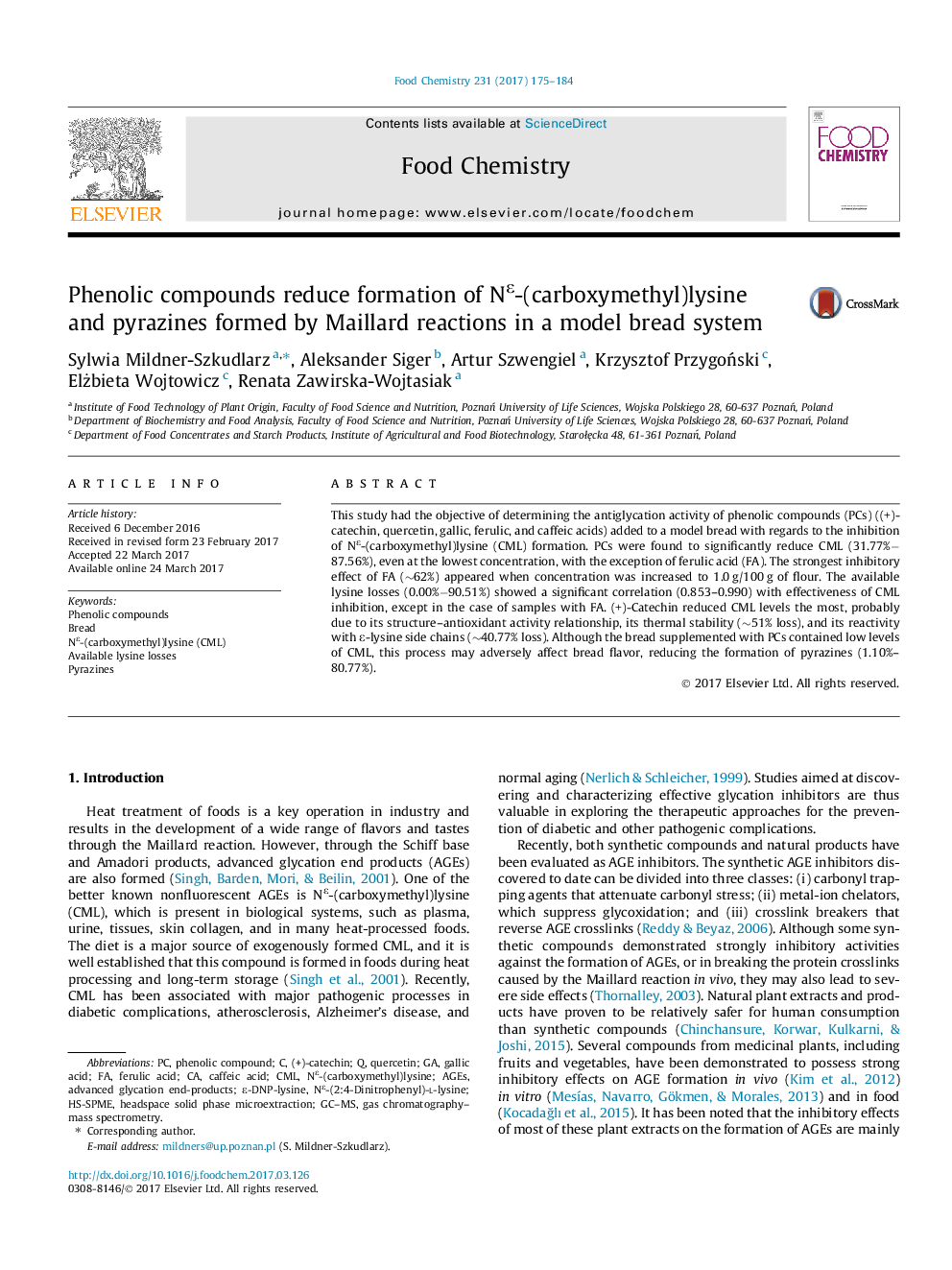| Article ID | Journal | Published Year | Pages | File Type |
|---|---|---|---|---|
| 5132883 | Food Chemistry | 2017 | 10 Pages |
â¢Phenolic compounds influence the glycation process.â¢Breads enriched with PCs inhibit CML generation.â¢The total amount of CML formed was dependent on the concentration of PCs.â¢PCs significantly suppress Maillard-type aroma generation during baking.
This study had the objective of determining the antiglycation activity of phenolic compounds (PCs) ((+)-catechin, quercetin, gallic, ferulic, and caffeic acids) added to a model bread with regards to the inhibition of Nε-(carboxymethyl)lysine (CML) formation. PCs were found to significantly reduce CML (31.77%â87.56%), even at the lowest concentration, with the exception of ferulic acid (FA). The strongest inhibitory effect of FA (â¼62%) appeared when concentration was increased to 1.0 g/100 g of flour. The available lysine losses (0.00%â90.51%) showed a significant correlation (0.853-0.990) with effectiveness of CML inhibition, except in the case of samples with FA. (+)-Catechin reduced CML levels the most, probably due to its structure-antioxidant activity relationship, its thermal stability (â¼51% loss), and its reactivity with ε-lysine side chains (â¼40.77% loss). Although the bread supplemented with PCs contained low levels of CML, this process may adversely affect bread flavor, reducing the formation of pyrazines (1.10%-80.77%).
